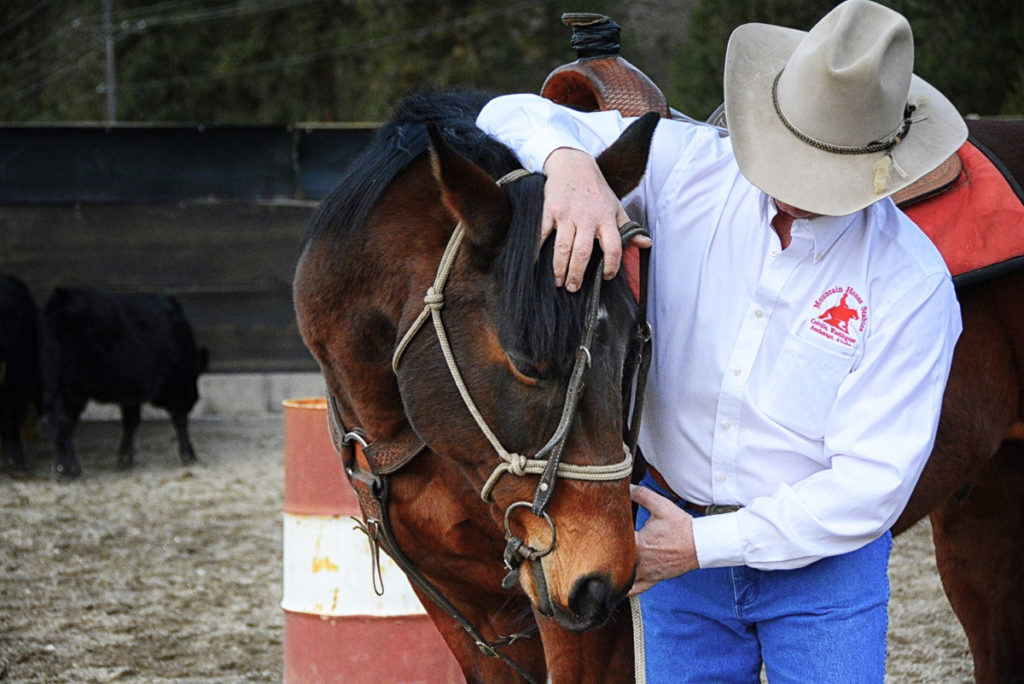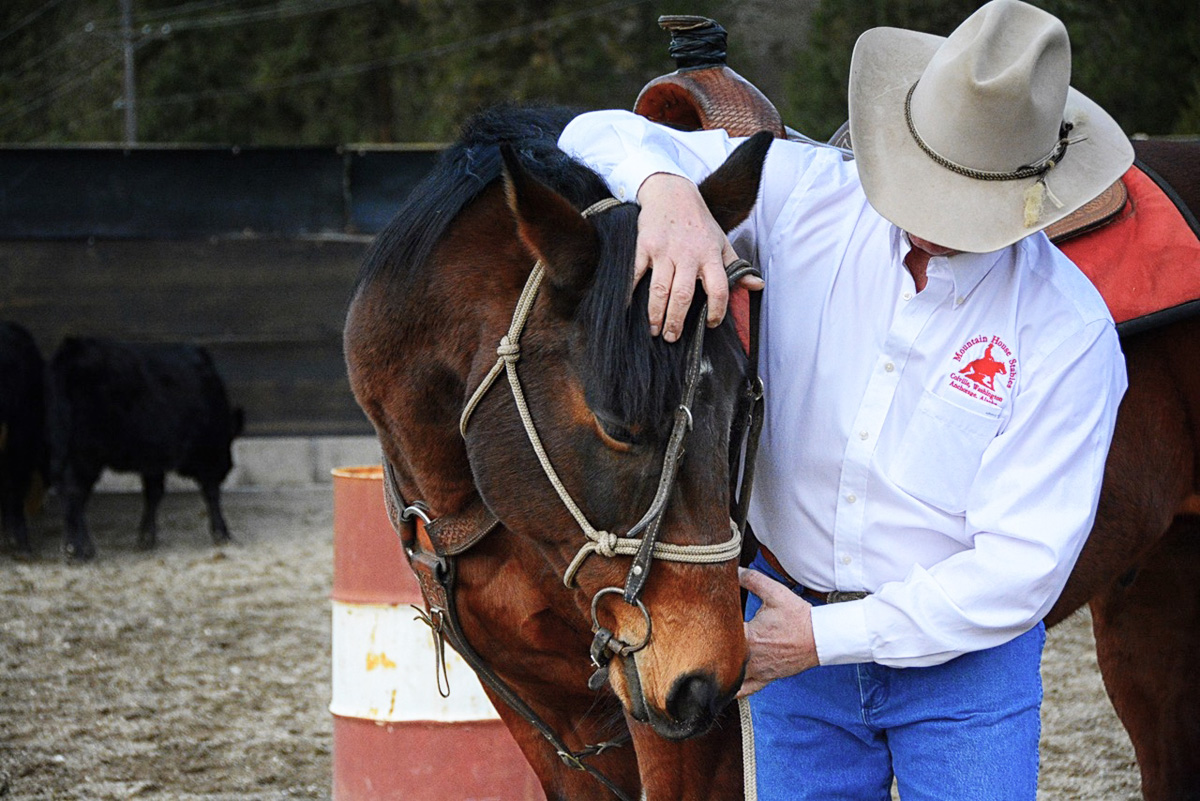Part 2: How to Teach Your Colt to Bridle
by Gerry Cox

Have you ever been assigned the task of teaching a horse to take his first bridle? When we were little kids on the ranch we used to lure the horses to the feed bin, talk the horse into taking a bite of hay from our hand and then we’d see if we could sneak the bit in. Sometimes, we got lucky and it worked. I have been honored to work with some very talented horsemen over the years that have shown me some useful horsemanship tricks. I cannot say that I use any one technique over another, but I do try to use the shared concepts I’ve discovered. One of these concepts, for anything you are trying to teach your horse, is to “make the right thing easy and the wrong thing difficult.” Basically, the horse seeks a release and this is how they learn. With that in mind, here is how I teach a horse to take a bridle for the first time.
Once I have the horse gentled enough that I can rub his neck, face and ears and have taught him to lower his head by touching just behind his ears, I am ready to teach him to take a bit. With his halter and lead rope on, I casually hold the lead in my right hand and will gently rub his face and muzzle with my left. If he remains kind and receptive, I stop. I then repeat the rubbing process and casually slip my left middle finger into the left corner of his mouth onto the bar of his lower gums and between his front teeth and molars. Be careful that the horse does not grab your finger with his tongue and push it back into his molars. He can and may bite by accident, as a reflex. As soon as he seems to relax, and softens and/or lowers his head, take your finger out of his mouth. If he tosses his head a little, you must keep your finger in place until he softens. Always let your horse think between attempts, so it soaks into his mind and he can connect his acceptance of your finger with the release of pressure (removal of the finger).
Repeat the above scenario and slip your finger in his mouth and keep it there until he begins to lower his head and soften his demeanor. Remove the finger. Pause to let the horse relax, then repeat. This time the finger goes into his mouth, encourage him to swing his head a little down and left. Remove your finger. Soon, when you reach for his mouth his head will naturally swing left and low without touching him. Reward him even for thinking about doing the right thing.
When this part of the exercise is going well, grab your snaffle bridle. Stand at your horse’s side and hold the bridle in your left hand. Slide your left hand up his face and guide the bit up under and behind his chin with your right hand. When the horse relaxes a little, remove it. Repeat and be sure to lift the bit under the chin. Now, trade hands with the bit that is secured up under his chin and with your left hand guide bit from under his chin to the front of his lips, keeping the bit spread with your fingers and thumb. Now, reach in with your middle finger on his right side and massage his tongue, slip the bit in and casually hold it with your right hand, keeping the pressure on the headstall so the bit doesn’t fall out. Don’t attempt to go to the ears yet! Wait until the horse settles and lowers the head a little then let the bit slip out. Wait, rub and repeat.
Soon, when the horse sees you reach for him with that bridle his face will swing left, go low and he’ll “ask” you to put the bit in his mouth. He is hoping you will reward that effort by allowing him to spit it back out in that soft position. When this process is fluent and effective, put the bit in his mouth, secure the bridle over his ears and let him wear it for awhile.
If you have a tough horse, don’t feel the need to rush this process. Maybe on the first day you only get him to accept your finger in his mouth and it takes a day for each step in the process. It may take several days to progress to the last step, but so what. It takes as long as it takes as each horse is an individual. Remember, this is a process, not an event!
Watch these videos for further information about bridling for the first time: https://www.youtube.com/watch?v=4dOEaTTI4DM; https://www.youtube.com/watch?v=lCErqmQzXPk

